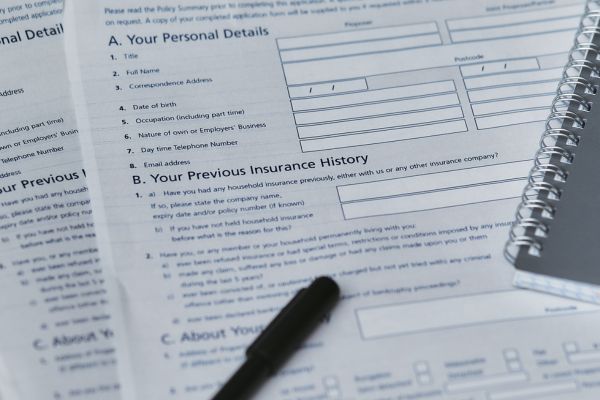How to Make a Successful Water Leak Insurance Claim UK
Most home insurance policies provide coverage for locating and repairing water leaks, but it’s crucial to adhere to specific procedures to ensure your claim is approved. Failure to act promptly can result in claim denial, adding complexity to the process. To successfully navigate the water leak insurance claim process in the UK, follow the tips below. By doing so, you’ll not only increase your chances of a successful claim but also minimize errors in case of a leak, presenting a stronger case that your insurance company will find challenging to dispute.
Understanding the Term “Escape of Water”:
The term “escape of water” is commonly used by insurers to denote leaks originating inside the property. This encompasses water leakage from sources such as pipes, appliances, tanks, or heating systems.
According to the Association of British Insurers (ABI), one in every four household insurance claims involves the escape of water, with burst or leaky pipes accounting for more than 80% of them.
The kitchen and bathroom are commonly affected areas, but concealed pipes throughout the home mean that any part of your property could suffer damage from a leak.
How to Successfully Make a Water Leak Insurance Claim in the UK:
Promptly Report the Incident:
- The first step in a successful water leak insurance claim is reporting the incident to your insurance company immediately. Most policies stipulate prompt reporting of damages upon discovery, as delays may jeopardize your claim.
Document the Damage:
- Thorough documentation is essential. Take photographs and videos of the affected areas, focusing on the damage caused by the leak. Ensure you capture both close-up shots and wide-angle views to provide comprehensive evidence. Keep records of any correspondence related to repairs or restoration.
Understand Your Insurance Policy:
- Before filing a claim, thoroughly review your insurance policy to understand coverage and limitations. Policies may differ, excluding certain types of water damage or imposing specific requirements for coverage. Understanding your policy details empowers you to make an informed claim.
Step-by-Step Claims Process:
Contact Your Insurance Provider:
- Upon discovering the leak, contact your insurance provider and provide a detailed account of the incident. Inquire about the necessary steps to initiate a claim and be prepared to provide policy details and documentation.
Assessment by an Insurance Adjuster:
- An insurance adjuster will assess the damage by inspecting the affected areas and reviewing documentation. Your presence during this assessment ensures accurate documentation of all damage.
Obtain Repair Estimates:
- Obtain repair estimates from reputable contractors and submit them to your insurance company for review. Some insurers may have preferred vendors, so it’s wise to check before hiring. Clarify coverage for repair costs beforehand.
Additional Tips for a Successful Claim:
Maintain Communication:
- Keep open communication with your insurer throughout the claims process, responding promptly to requests for information and documenting all correspondence.
Adhere to Deadlines:
- Be mindful of deadlines set by your insurer, submitting required documents and information promptly for a smooth process.
Be Aware of Exclusions:
- Understand exclusions in your policy, such as gradual leaks, to avoid surprises during the claims process.
What to Do When You Notice a Leak:
If you observe water trickling or damp spots, never ignore them, as leaks can lead to extensive damage. Older damage may be less likely covered, and patching a leak without informing your insurer could lead to future claim denials.
Here’s what we think you should do:
Reduce the Damage from the Leak:
- Insurance companies expect you to take immediate steps to minimize damage, a process known as mitigation. If water is rushing in, such as from a burst pipe, locate and shut off your internal stopcock (or stop valve), then run faucets to drain the system. If you can’t access the internal stopcock, shut off the water supply using the mains stopcock outside your home. In severe cases, also switch off the power. Even if the leak seems minor, have it inspected and repaired promptly, as even small leaks can lead to significant damage over time.
Gather Evidence for Your Insurance Claim:
- Gathering evidence is crucial for a successful insurance claim, and the more compelling it is, the better your chances. Take photos of any damaged walls, ceilings, or belongings, and document the progression of any leaks over time. A professional leak detection service can provide a comprehensive report to support your claim, especially in the case of burst pipes.
Contact Your Insurance Company:
- Inform your insurance company promptly about the situation. Whether you file a claim online or by phone, have your policy number and a list of damaged items ready. Your insurer will likely provide instructions on submitting evidence.
Arrange a Trace and Access Service:
- If you’re unsure of the leak’s exact location or if it’s concealed, enlist a leak detection professional to conduct a trace and access investigation. This involves various methods like moisture surveys, pressure testing, and thermal imaging to locate the source of the leak. Depending on their findings, consult your insurer before proceeding further.
Work with the Loss Adjuster:
- Your insurer may assign a loss adjuster to assess the claim’s validity and cost. The adjuster will determine the problem’s origin, assess coverage, and estimate repair costs. They are expected to provide an objective evaluation, and their findings will influence your claim’s outcome.
Obtain Repair Quotes:
- Seek quotations for home repairs, known as reinstatement work, which includes tasks like masonry, plastering, and flooring. Your insurer may suggest preferred contractors, but ultimately, you have the final say. If needed, engage a chartered surveyor to prepare a scope of restoration work.
Conclusion:
A successful water leak insurance claim in the UK requires prompt action, thorough documentation, and effective communication with your insurer. By understanding the process and seeking professional assistance when necessary, you can navigate the claims process confidently. Remember that each claim is unique, and professional advice can help streamline the process.






